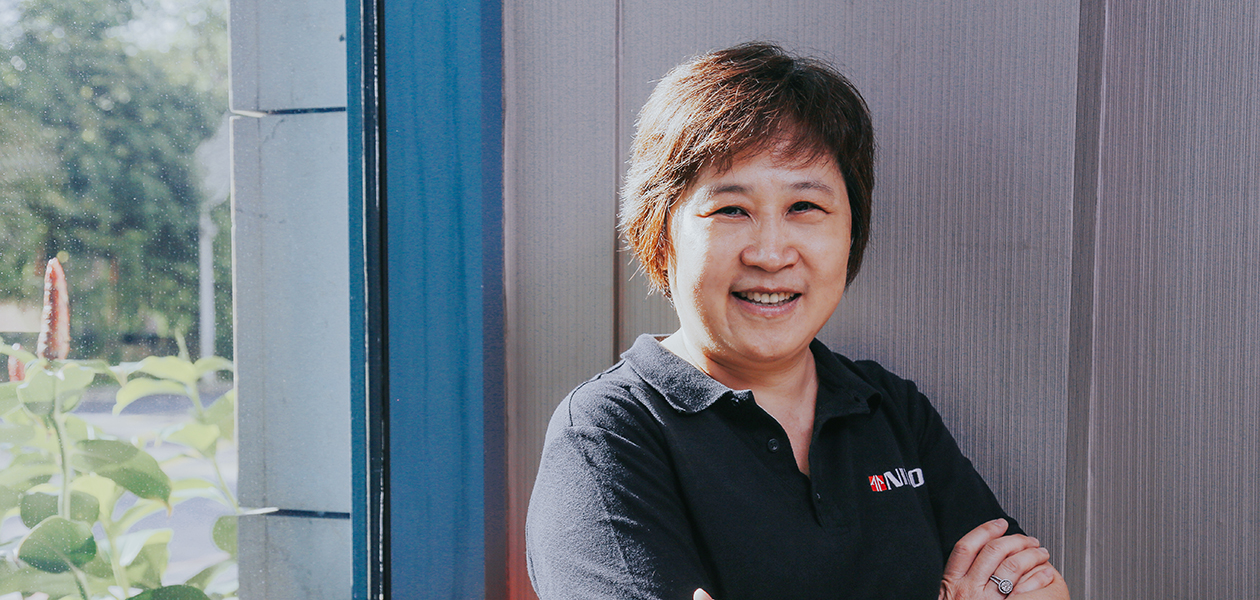Insulating against disruption
Not every company can afford to 'go it alone' when it comes to R&D, hence open innovation is essential for survival, says Amanda Khoo of Nipo International Pte Ltd.
More than half of the world’s population is housed in cities, and according to a report by the United Nations, this demographic is expected to increase to two-thirds by the year 2050. The building and construction sector has a major role to play in the development and expansion of urban areas. Within the sector itself, competition is rife to improve the durability and sustainability of buildings.
Rising to the challenge is Nipo International Pte Ltd, a Singapore-based firm that specialises in protective coatings for infrastructure. Founded in 1980, the company started out by manufacturing coatings made from a crude oil by-product called bitumen that could be used for waterproofing. It has since expanded its repertoire of offerings to include applications for insulating structures against sound, vibration, temperature and rust, among other environmental insults.
To create its wide range of industry solutions, Nipo International has embedded open innovation into its R&D strategy. With partners in academia and research agencies, it has managed to leverage talent and equipment beyond its four walls to bring new products and services to its clients located throughout Asia. Amanda Khoo, Director at Nipo International, shares with IPI how the company has managed to remain relevant for more than three decades.
1. What is the core competency/technology of your company?
Our core competency lies in original design manufacturing, with a focus on liquid-based construction material supplies. We also have the capability to scale up inventions developed by labs. Research institutes normally focus on the end results; they may not be fully aware of the many considerations to bring solutions from the bench to a pilot plant-level exercise.
Over the course of our interactions with research institutes, we are exposed to different technologies. Some of these technologies do not result in an end product by themselves. Instead, they may be incorporated with our other products and allow us to diversify our offerings.
2. How has open innovation contributed to the building up of this competitive advantage?
For a small and medium enterprise such as ours to survive, it is critical that we continuously bring new products to the market. The approach of creating me-too products only facilitates a price war. Innovation is a more creative way to differentiate ourselves.
Having said that, gone are the days when you have to house all R&D in secret silos within the company—it’s just poor resource management. Working with the institutes of higher learning and government-backed research organisations like the Agency for Science, Technology and Research (A*STAR), we were able to tap on researchers who have deep expertise in their respective fields. This gives us the opportunity to explore new frontiers which we wouldn’t have ventured into on our own. Our joint lab with A*STAR also grants us access to equipment which we never would have acquired by ourselves.
Open innovation thus allowed us to source for talent, collaborate with new partners and run multiple projects concurrently.
3. Was there a turning point in your company's history that convinced you that open innovation was the right way to grow?
Every day is a turning point. Every product has its own lifecycle, and we recognised this fact early on. If we do not update existing products or create new ones, the company would stagnate.
But when we first started to embrace open innovation, it was a bit of a hit-and-miss situation as we had to figure out which agency or department to talk to and partner with for projects that would give us an innovative edge in our industry. Over time, we managed to strike up conversations with agencies like IPI and A*STAR, and those conversations opened the doors to joint projects.
We have been fortunate to have met people who believed in what we are doing. We’re also thankful to those who have guided us along the path of open innovation, or introduced us to people who could assist us in achieving our ambitions.
4. How do you encourage a culture of open innovation in your company?
We have a small but strong and cohesive team; we look at new business or product development through a different lens. When it comes to evaluating new technologies, the team is tasked with exploring the invention and learning how we may be able to customise it to our customers’ needs, even when the industry ‘fit’ is not immediately obvious.
An example would be our National Research Foundation proof-of-concept project with KK Women’s and Children’s Hospital and the National University of Singapore. The technology being developed was meant to be applied to a thermal blanket. At first, this may seem to have nothing to do with the building and construction sector at all. However, the principles relevant to maintaining human body temperature are translatable to the maintenance of building temperature as well, and therein lies the opportunity to bring innovation from one context into another.
5. What are some key lessons that you have learnt in the process of engaging in open innovation?
Unless you have all the resources, it’s not always necessary to ‘go it alone’. Keep an open mind when looking at technology because you’ll never know when it can come in handy. It is also important to understand your industry’s needs, now and in the future. Finally, don’t be afraid of failure!

